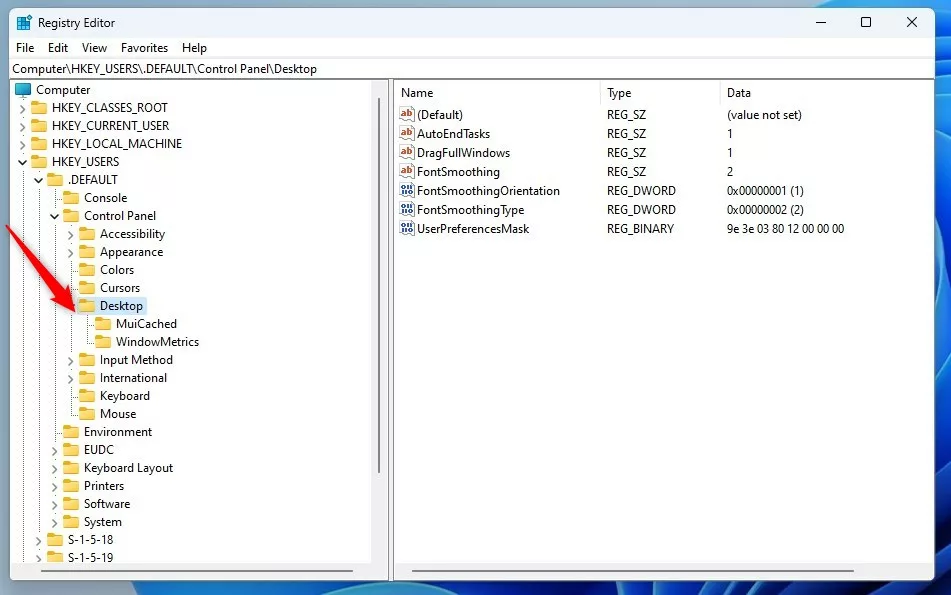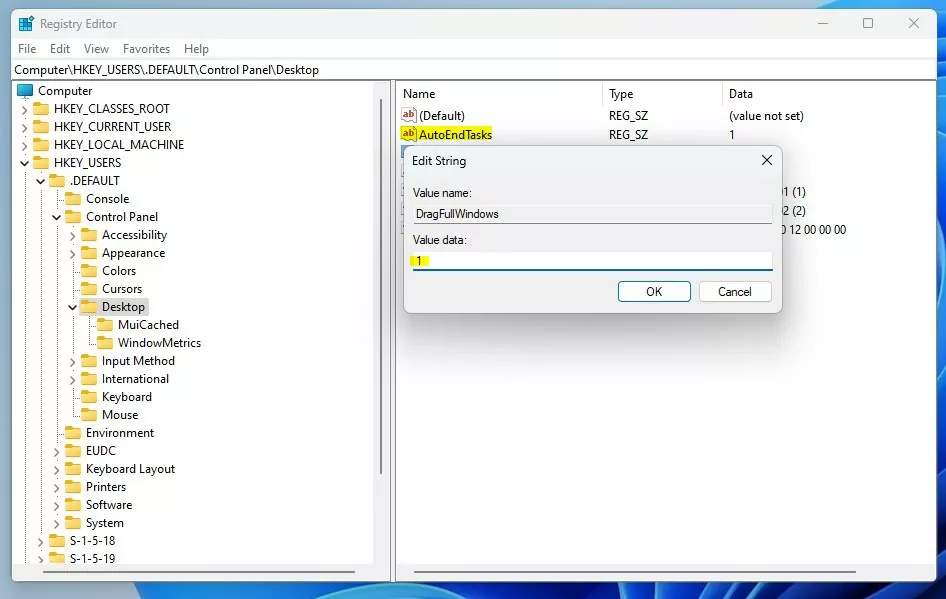This article describes how to turn or off AutoEndTasks during Shutdown, Restart, or Signing out of Windows 11
If you have an app open with tasks running and try to shut down, restart or sign out of your desktop, Windows will not automatically follow through with your command.
Instead, Windows will wait for 5 seconds (HungAppTimeout) before prompting with the End Task dialog asking you to cancel and close the app and process or shutdown anyway.
If you do not respond to the (AutoEndTasks) prompt in the desired time, Windows will automatically return to your desktop without shutting down or restarting your computer.
Below is how to enable or disable the AutoEndTasks feature in Windows 11.
Enable or disable the AutoEndTasks dialog prompt for all users
As described above, if you have a running app or process and attempt to shut down or restart your computer, Windows will not automatically shut down.
Windows will wait a minute for you to respond to the prompt asking to save and close the app before doing so.
If you don’t want to prompt or are not getting the prompt, here’s how to turn it on or off.
Open the Windows Registry, and navigate to the folder key path below.
HKEY_USERS\.DEFAULT\Control Panel\Desktop
If you don’t see the Desktop folder key, right-click on the Control Panel key, then create the subkey (Desktop) folders.

Right-click the Desktop folder key’s right pane and select New -> String Value. Next, type a new item named AutoEndTasks.
Double-click the new item name (AutoEndTasks) and then update the Value data, making sure you keep your existing value:
- Delete item (default)
- To turn this feature on. Type 1.
- To turn this feature off. Type 0.

Save your changes and restart your computer.
If you don’t want this change to apply to all users on the system, then use the registry key path:
HKEY_CURRENT_USER\Control Panel\Desktop
Then follow the same steps above.
Below is an example of the AutoEndTasks prompt in Windows 11.

That should do it!
Conclusion:
- Enabling or disabling AutoEndTasks can streamline the shutdown, restart, or signing out process in Windows 11.
- The registry edit process allows users to customize the AutoEndTasks feature according to their preferences.
- Prompting users to save and close running apps before shutting down or restarting the system can help prevent data loss.
- Users can follow the provided steps to adjust the AutoEndTasks setting based on their requirements.
- Please utilize the comment section below the article for additional information or contributions.

Leave a Reply